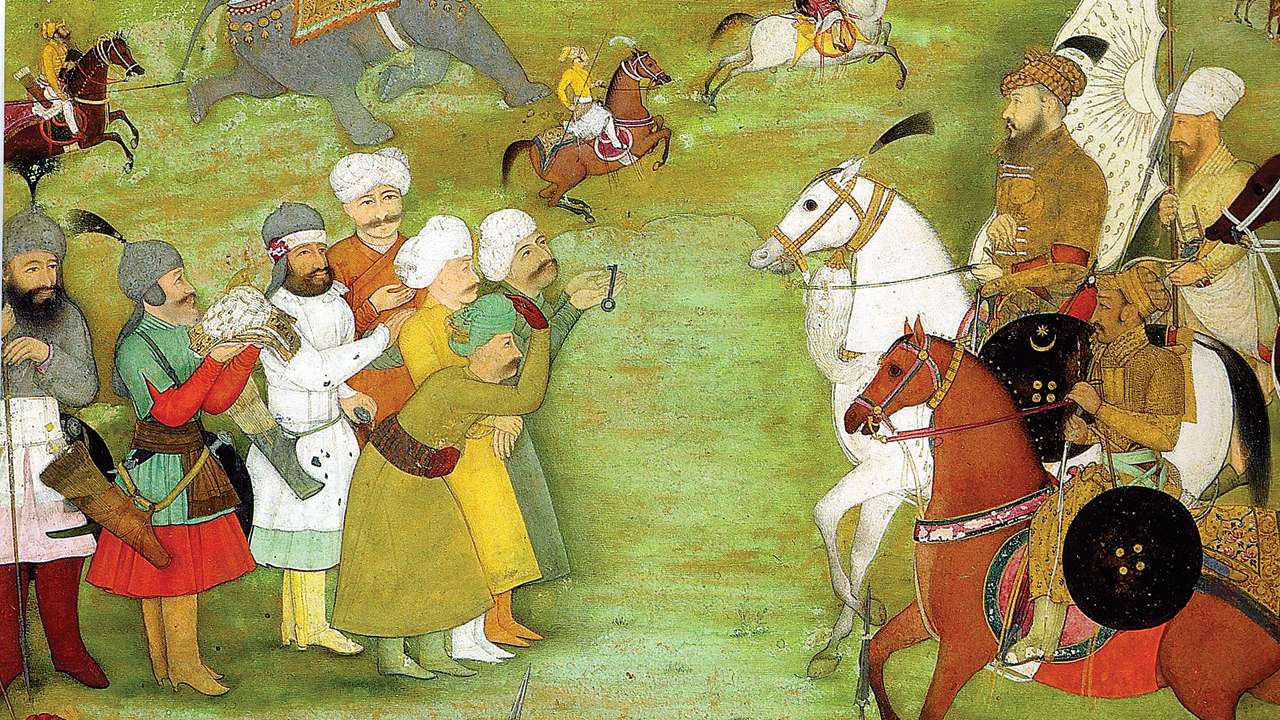
Today, the term Kandahar evokes mostly memories of the IC-814 hijack. It appears infrequently in the news, in context of our projects in Afghanistan, or terrorist attacks. However, for a long time in history, the affairs of Kandahar commanded considerable attention in India. Afghanistan was the favoured overland route to India – for both trade and war. This, in turn, hinged on the control of Kandahar, just as much as Kabul, which dominated the Khyber Pass route. Over the centuries, many powers threw their armies against the walls of Kandahar to control this fulcrum. The city also became the centrepiece of endless intrigue and diplomacy. However, the bloodiest conflict of all was between the Mughals and the Safavids of Iran. For the Safavids, the obsession with Kandahar would eventually lead to their downfall.
Why was Kandahar so important? In south-central Afghanistan, a large swathe of alluvial land lies at the confluence of two rivers. The fertile soil, the climate, and irrigation enabled dense settlement. The origin of the name is still debated but old Kandahar was founded here in ancient times. Today’s Kandahar is however recent, founded about 300 years ago. Khorasan (present-day northeastern Iran, north-central Afghanistan and Turkmenistan) was a hotly contested region for millennia, and Kandahar was key to its control. Moreover, Kandahar was a major traffic junction. The ancient southeast road passing through Kandahar connected Khorasan to India. The northeast road connecting eastern Iran to Kabul (and onward into India) also ran through Kandahar. Kandahar, therefore, developed into a bustling, well-fortified emporium and many competing powers vied for its control down the centuries.
However, it was the simultaneous rise of the Mughals and the Safavids that brought the tussle to unseen levels.
The Safavids (1501-1736) had forged a separate identity for Iran by vigorously promoting Shia Islam. They also inherited the ancient Iranian fear of Central Asian marauders. Control of Khorasan, through Kandahar, was deemed indispensable. Moreover, controlling this emporium would bring great riches. Kandahar could also be a springboard for invading India: after all, there were Shiite kingdoms there actively seeking Safavid intervention. On the other hand, the Mughals owed their ascent to possession of Kabul and Kandahar; they also understood Kandahar’s strategic value and the threat from the west very well.
In the 16th-17th century, Kandahar changed hands multiple times, but trade and commerce resumed every time. In 1522 CE, Babur captured Kandahar, defeating the local dynasty and the Safavids. His son Humayun was forced to hand it over to the Safavids in 1543, in return for their support during his exile. In two years, Humayun rebuilt his power and captured Kandahar. Safavids perceived this as a betrayal but Humayun managed to contain the damage. Humayun suddenly died in 1556 and in the ensuing confusion the Safavids captured Kandahar. Akbar managed to retake Kandahar through subterfuge in 1595; his death in 1605 prompted a futile Safavid invasion. The Safavids wrested Kandahar from Jahangir in 1622. In 1638, a defecting Safavid commander handed over Kandahar to Shah Jahan. Ten years later, the Safavids recaptured Kandahar in a determined campaign. Mughal attempts to retake Kandahar failed colossally: by 1653, Shah Jahan ceased all attempts. Aurangzeb also desired re-conquest but geopolitics, rebellions and the Deccan wars stood in the way.
The Safavid success was rather short-lived; their obsession with Kandahar led to oppression of the local tribes. The rapacious Georgian governor and Safavids’ religious zeal made things worse: Kandahar soon became the spearhead of Safavids’ ruin. The region was populated by the Ghilji and Abdali tribes who bore the brunt of Safavid imperialism. Under the Ghilji chief Mirwaiz Hotak and his successors, the Kandahar Afghans overthrew the foreign yoke in 1709. By 1722, the Hotaks swept into Iran and established Afghan rule, practically eradicating the Safavid line. The Hotaks reigned till the Iranians rebounded in 1729 under Nadir Shah. The Afghans were pushed back to Kandahar by 1738. After conquering Kandahar, Nadir Shah ordered the complete destruction of the city. Kandahar would, however, get a second life when Ahmed Shah Abdali established his empire in 1747; a new Kandahar was built next to the ruins of the old. Meanwhile, the Mughals weakened and many contenders scrambled for power. As feared, control of Kandahar now enabled massive invasions of fractured India. Nadir Shah’s terrible invasion of 1739 practically ended the Mughals. Abdali’s seven invasions between 1748 and 1767 also claimed many lives and crippled the Marathas, thus paving the way for British ascent.
Subsequently, many powers tried to control Kandahar – for varying reasons – but ultimately everyone reaped disappointing results. Events in modern history have eroded the strategic value of Kandahar, but it still is a prized objective for many. Today, despite endless crises and bloodshed, Kandahar endures – in a fashion.
The author, an IIM Ahmedabad graduate working in the energy sector, has a keen interest in history, politics, and strategic affairs